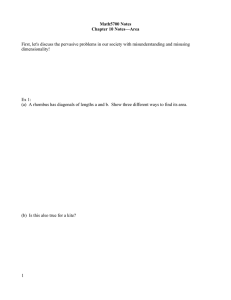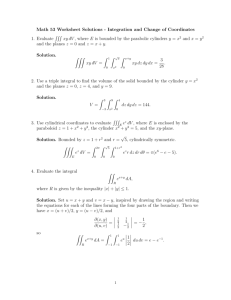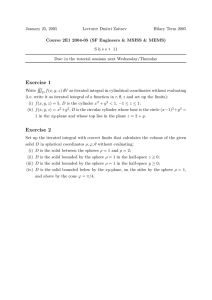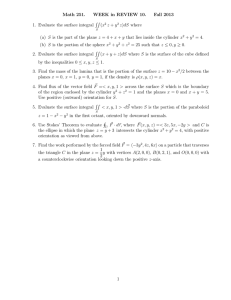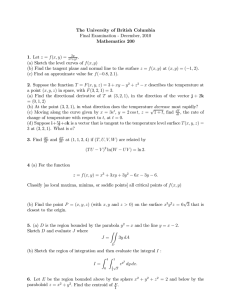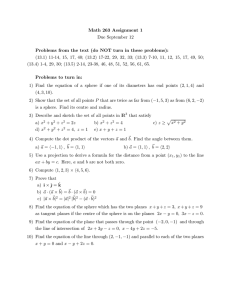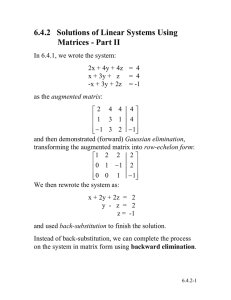Surface Area
advertisement
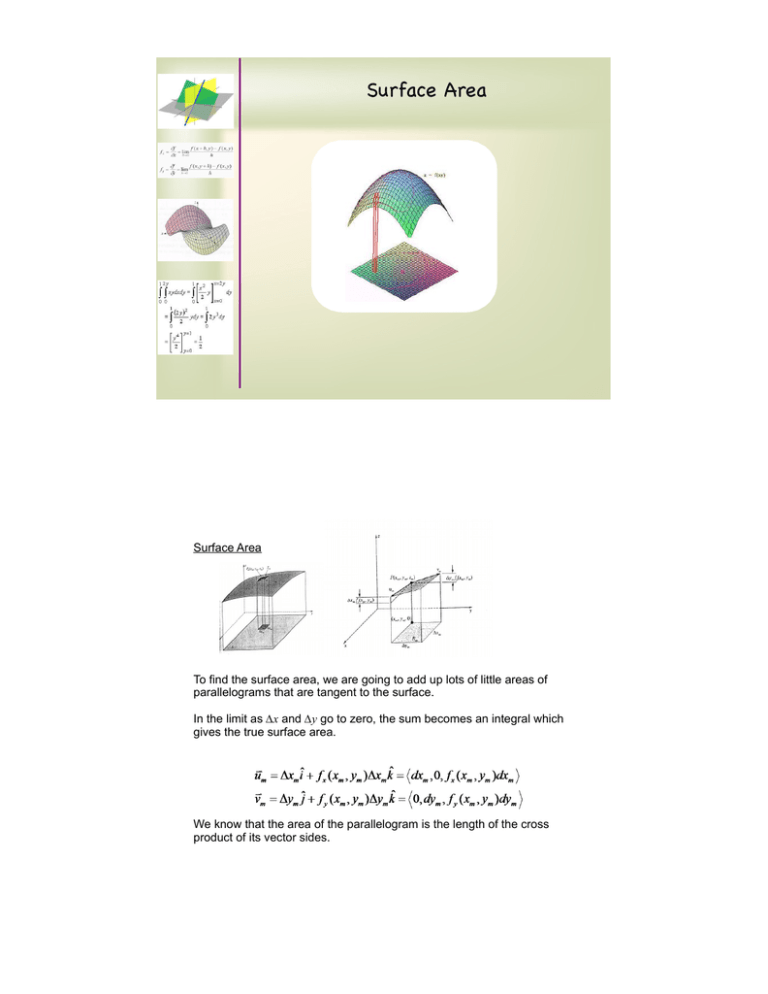
Surface Area
Surface Area
To find the surface area, we are going to add up lots of little areas of
parallelograms that are tangent to the surface.
In the limit as ∆x and ∆y go to zero, the sum becomes an integral which
gives the true surface area.
⇀
⇀
We know that the area of the parallelogram is the length of the cross
product of its vector sides.
EX 1 Find the surface area of the plane 3x - 2y + 6z = 12 that is bounded
by the planes, x = 0, y = 0, and 3x + 2y = 12 .
EX 2 Find the surface area for the part of the sphere, x2 + y2 + z2 = 9,
that is inside the circular cylinder, x2 + y2 = 4.
EX 3 Find the surface area of z = 4 - x2 - y2
over S = {(x,y)| x2 + y2 ≤ 1}.
For a surface area defined parametrically,
⇀
r(u,v) = 〈f(u,v), g(u,v), h(u,v)〉.
EX 4 Find the surface area of a surface given parametrically by
⇀
r(𝜃,φ) =〈2sinφcos𝜃, 2sinφsin𝜃,2cosφ〉.
R = {(𝜃,φ)⎟ 𝜃 ∈ [0,2π], φ ∈ [0,π]}
